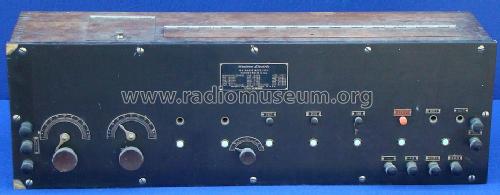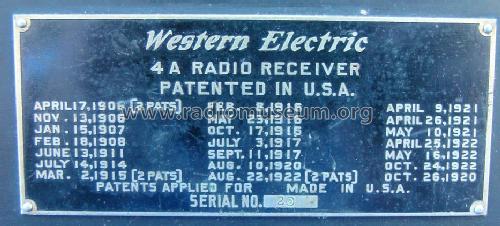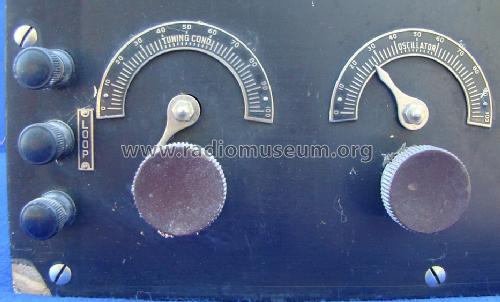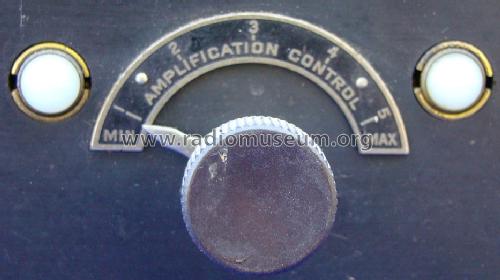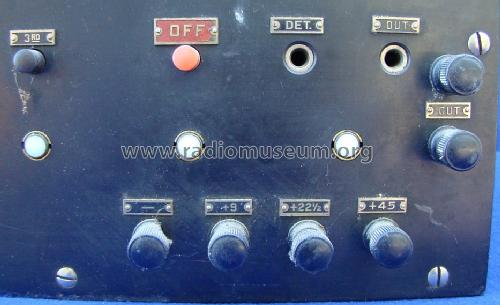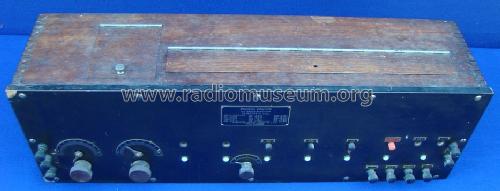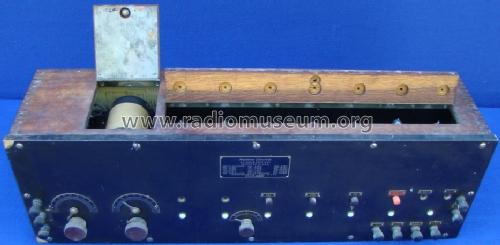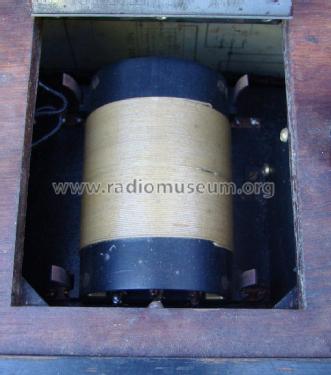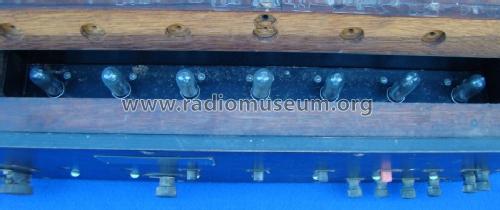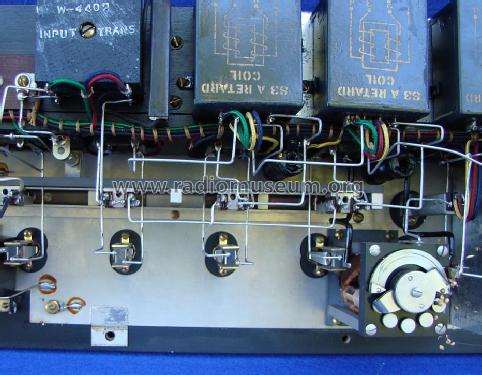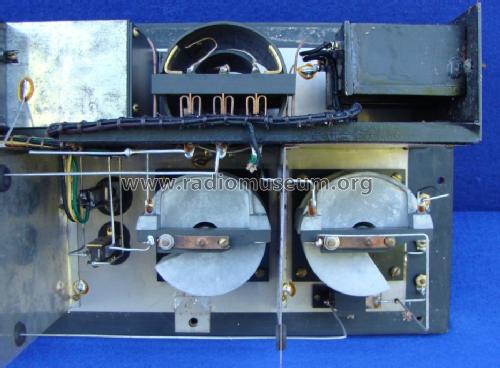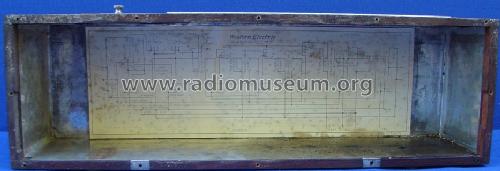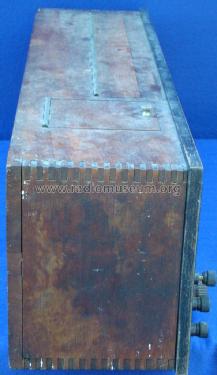- Pays
- Etats-Unis
- Fabricant / Marque
- Western Electric Company Inc.; New York (NY)
- Année
- 1922
- Catégorie
- Radio - ou tuner d'après la guerre 1939-45
- Radiomuseum.org ID
- 222014
- No. de tubes
- 7
- Principe général
- Super hétérodyne (en général); 2 Etage(s) BF
- Gammes d'ondes
- PO uniquement
- Tension / type courant
- Piles sèches
- Haut-parleur
- - Ce modèle nécessite des HP externes
- Matière
- Boitier en bois
- De Radiomuseum.org
- Modèle: 4-A - Western Electric Company Inc.;
- Forme
- Modèle de table boitier avec vouvercle
- Dimensions (LHP)
- 26.75 x 8.75 x 6.75 inch / 679 x 222 x 171 mm
- Remarques
- Western Electric 4-A Superheterodyne Receiver designed by Harald Friis. During his career with the Bell System, Harald Friis contributed substantially to almost every aspect of the radio art. His earliest work was on vacuum tube efficiency. He then worked on ship-to-shore radio reception. In the early twenties he built the very first field measuring set, for the 300 to 400 meter range. He also designed the first commercial double-detection or superheterodyne radio receiver, the Western Electric 4A receiver. Double detection means that there are two "Detector" stages: the first one is the mixer (of signal and oscillator frequency), the second one is for demodulation.
- Littérature
- Radio Manufacturers of the 1920's, Vol. 3 (Page 232)
- Auteur
- Modèle crée par Alan Larsen. Voir les propositions de modification pour les contributeurs supplémentaires.
- D'autres Modèles
-
Vous pourrez trouver sous ce lien 171 modèles d'appareils, 150 avec des images et 32 avec des schémas.
Tous les appareils de Western Electric Company Inc.; New York (NY)
